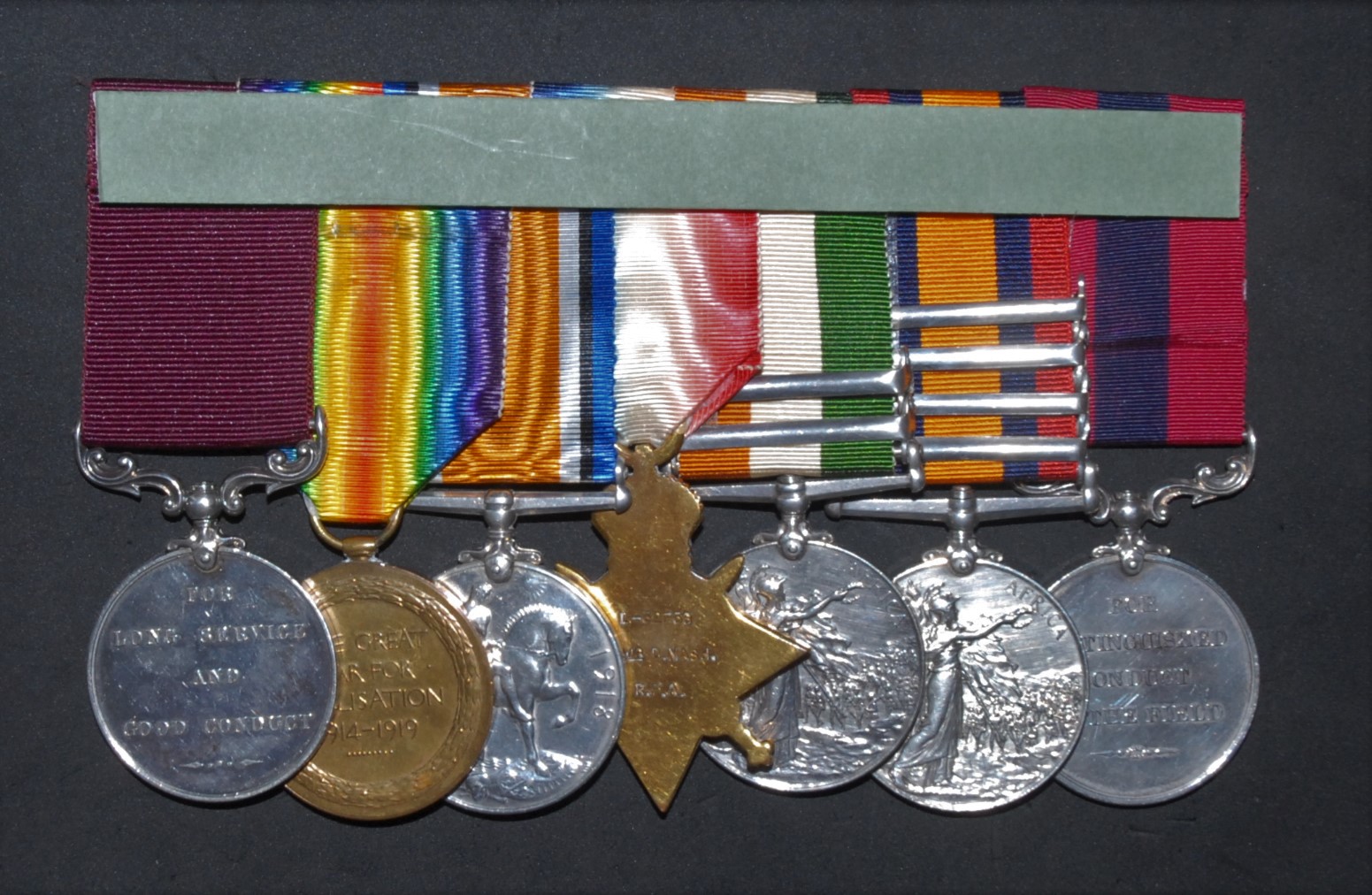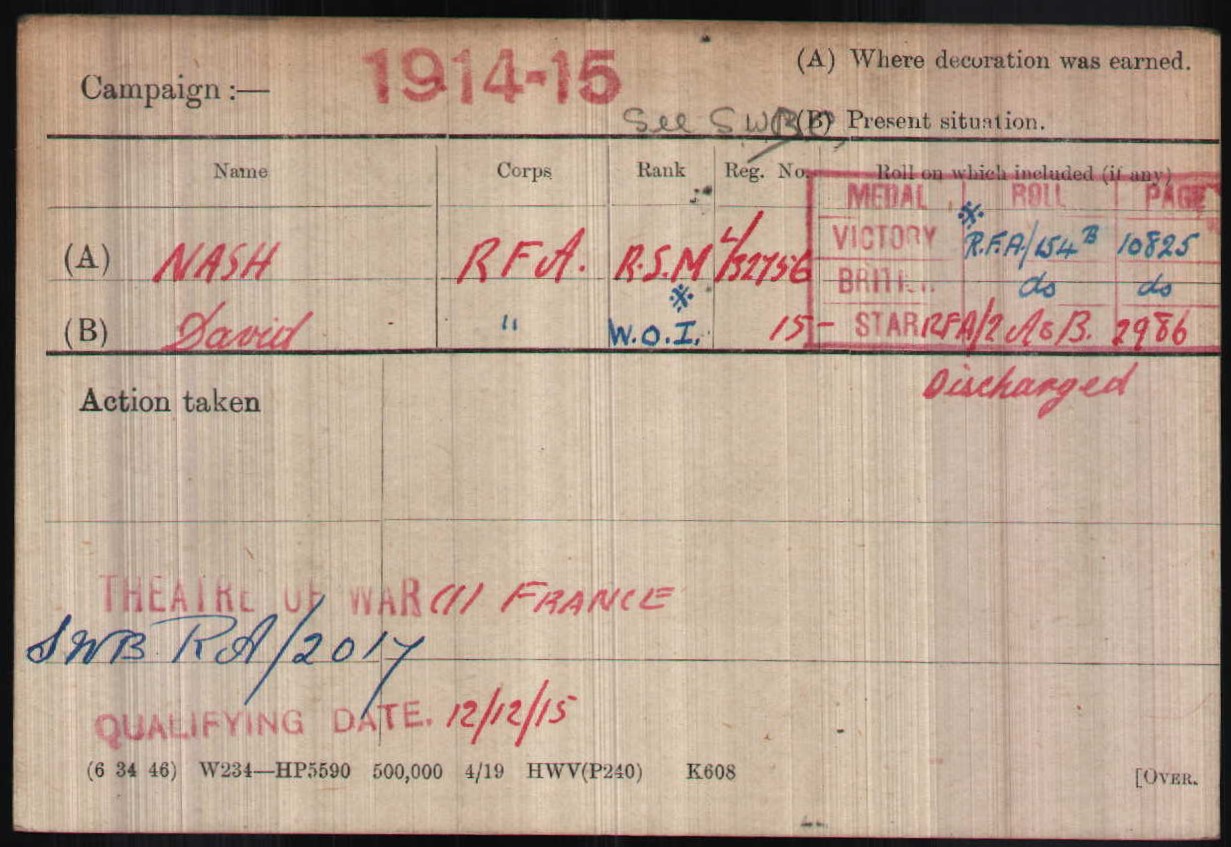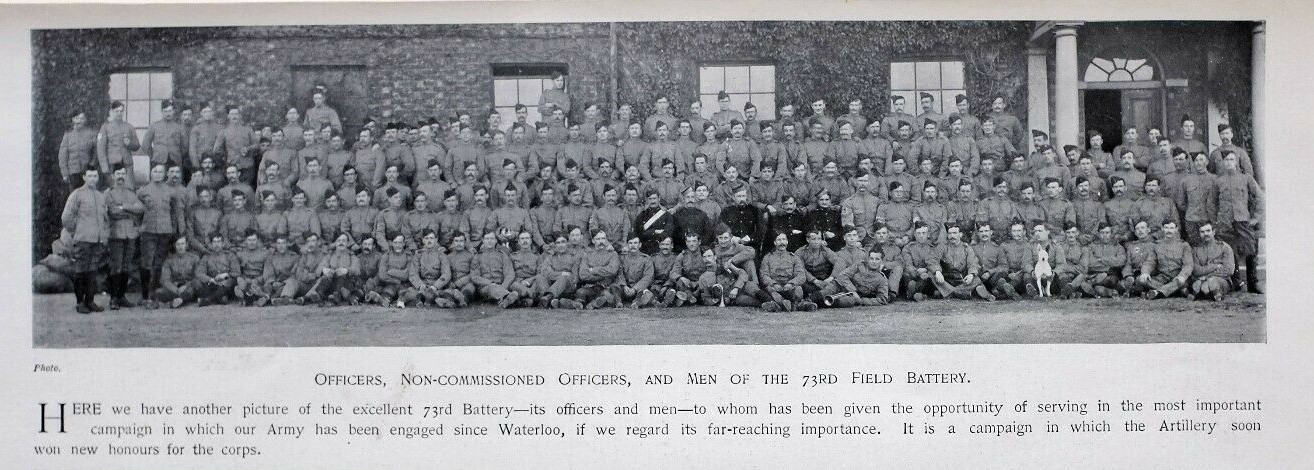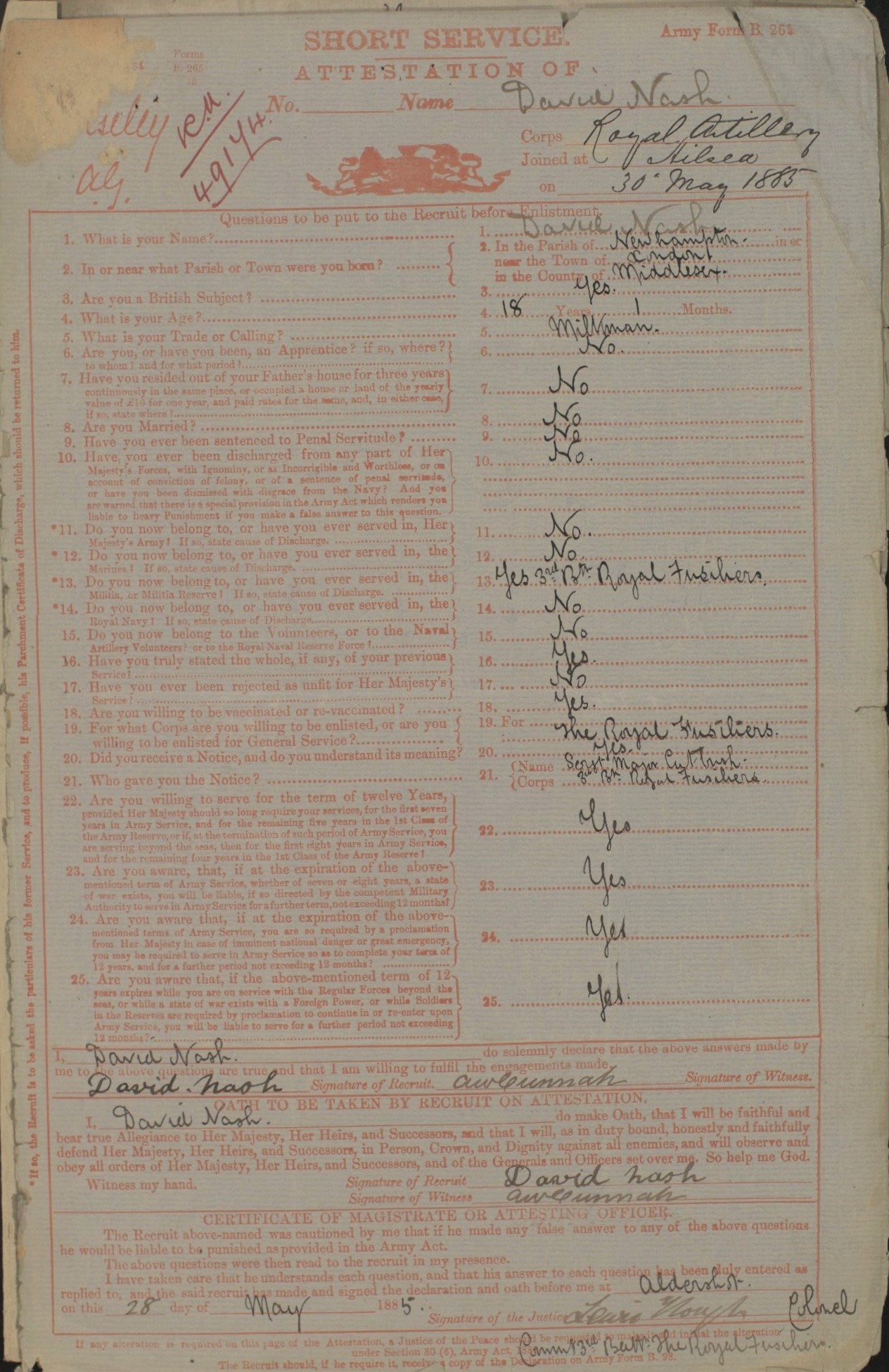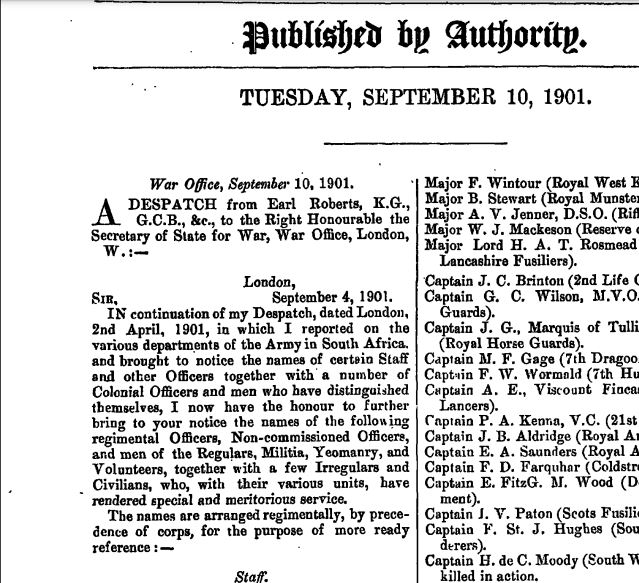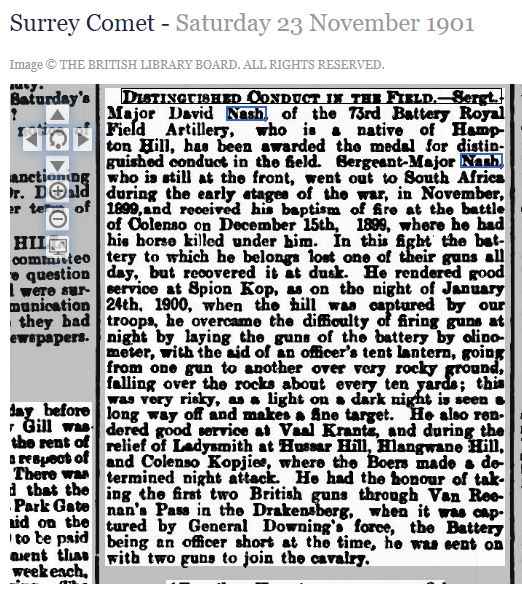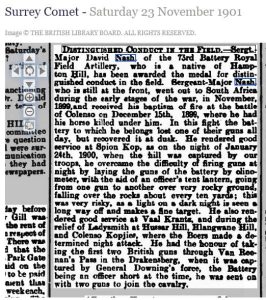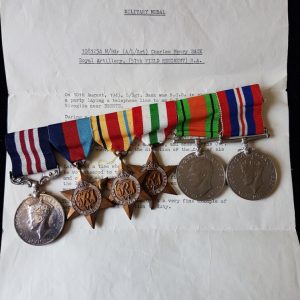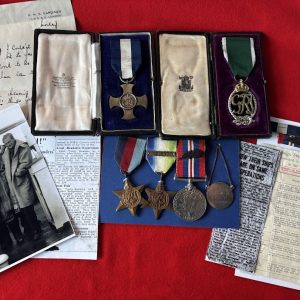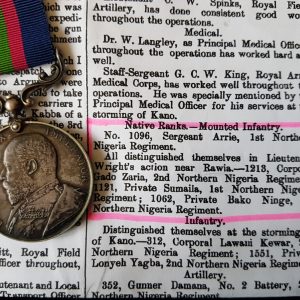Description
The superb Distinguished Conduct Medal group to Battery Sergeant-Major David Nash, 73rd Bty, R.F.A.
This award of the Distinguished Conduct Medal was reported in the Surrey Comet, November 1901 as shown in the following transcript.
Surrey Comet – Saturday 23 November 1901
Distinguished Conduct the Field. Sergt-Maior David Nash, 73rd Battery Royal Field Artillery, who is a native of Hampton has been awarded the medal for Distinguished Conduct in the Field.
Sergeant-Major Nash, who is still at the front, went out to South Africa during the early stages of the war, in November, 1899 and received his baptism of fire the battle of Colenso on December 15th, 1899, where he had his horse killed under him. In this fight the battery to which he belongs lost one of their guns all day. but recovered at dusk. He rendered good service at Spion Kop, night of January 24th, 1900, when the hill was captured our troops, he overcame the difficulty of firing guns night by laying the guns of the battery by clinometer, with the aid of officer’s tent lantern, going from one gun to another over very rocky ground, falling over the rocks about every ten yards; this was very risky, as a light on a dark night is seen a long way off and makes a fine target. He also rendered good service at Vaal Krantz, and during the relief of Ladysmith, Hussar Hill, Hlanwane Hill and Colenso Kopjies, where the Boers made determined night attack. He had the honour of taking the first two British guns through Van Reenan’s Pass in the Drakensberg, when it was captured by General Downing’s force, the Battery being officer short the time, was sent on with two guns to join the cavalry.
Medals – DCM EVII (49174 B: SJT: MAJ: D. NASH. 73RD. BTY: R.F.A.); QSA (4) Tugela Heights, Orange Free State, Relief of Ladysmith, Transvaal; (49174 B.S. MAJOR. D. NASH. 73RD BTY., R.F.A.); KSA (2) (49174 B. SERJT:-MAJ: D. NASH. R.F.A.); 1914-1915 Star; (L-32758 S.MJR. D. NASH. R.F.A.); British War Medal and Victory Medal; (L-32756 W.O.CL.1. D. NASH. R.A.); Army LS&GC EVII (49174 B.S. MAJOR. D. NASH. R.F.A.)
David Nash was born in New Hampton, London, and having worked as a milkman, and saw service in the Militia as a Private with the 3rd Militia Battalion, Royal Fusiliers. He then attested for service, aged 18 years, into the British Army as a Driver (No. 49174) with the Royal Field Artillery on 28th May 1885, when posted to the 5th Brigade. With the re-organisation he found himself serving with the 54th Field Battery from 1st July 1889, and was appointed to Acting Bombardier on 17th September 1889, before being posted to the 73rd Field Battery on 4th October 1890.
Promotions followed as Bombardier on 9th September 1891, Corporal on 26th August 1892, Sergeant on 10th September 1894. He remained on home service through to the outbreak of the Boer War. Promoted to Battery Sergeant Major on 7th October 1899, he was then posted with his battery to South Africa on 3rd November 1899.
The 73rd Battery, along with the 64th formed Parson’s Brigade Division at Colenso on 15th December 1899, when both batteries did much valuable work. The 73rd Battery then accompanied Hart’s brigade in the Venter’s Spruit and Spion Kop operations leading to the relief of Ladysmith in February 1900, when it was at Vaal Krantz and in the final great combat for the relief, the Brigade Division then being the 28th, 73rd, and 78th.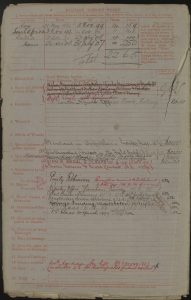
Later in 1900 it was brought round to the Transvaal, and in 1901 two guns were in the column of Colonel Grey, afterwards with Colonel Garratt. Nash was the most senior non-commissioned officer within the 73rd Battery during the conflict, and he was one of only two men from the Battery to be awarded the Distinguished Conduct Medal for the Boer War.
Mentioned in Despatches for gallant and distinguished service – London Gazette – 10th September 1901.
Distinguished Conduct Medal – London Gazette- 27th September 1901 (Army Orders No.15 of 1902). 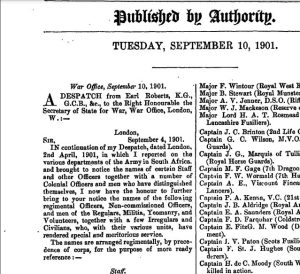
Nash was posted to India from 15th October 1902, and was awarded the Army Long Service and Good Conduct Medal in Army Orders No.172 of 1903, and having been permitted to extend his service beyond 21 years on 4th September 1905, was then posted home and transferred to the 31st Field Battery on 24th November 1906, and discharged on 31st July 1907.
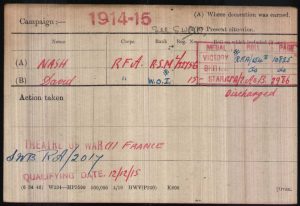
With the outbreak of the Great War, Nash re-enlisted for the duration of the war at London on 26th June 1915, and was appointed a Warrant Officer 2nd Class and Battery Sergeant Major with the 166th Brigade. Appointed to Acting Warrant Officer 1st Class and Acting Regimental Sergeant Major on 29th November 1915, he was then posted to the Headquarters of the 167th Brigade on 1st December 1915, and saw service out on the Western Front from 12th December 1915. It was during the Battle of the Somme that Nash suffered a shrapnel wound to the left shoulder whilst in action on 22nd July 1916, as a result of which he was evacuated home on 25th July 1916, and did not see active service overseas again.
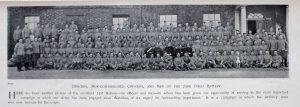
Posted as an Acting Regimental Sergeant Major to the 5th Reserve Brigade on being posted home, on his recovery he was posted as the Regimental Sergeant Major to the 1st ‘B’ Reserve Brigade on 17th October 1916, and was posted to ‘C’ Battery of the 342nd Brigade on 28th January 1918, before being posted to the Regimental Headquarters of the 342nd Brigade on 8th February 1918, and discharged physically unfit on 27th June 1918. He was awarded the Silver War Badge. Nash returned to live on King’s Cross Road in London. Confirmed as his full medal entitlement.
This superb medal group comes with numerous laminated sheets of copy medal rolls and service papers.
PAYPAL is NOT available for this item. Overseas buyers must contact us to agree shipping prior to order. Email ttandm4h@outlook.com for details or call 07765 595662 to arrange.
Card Payment on Checkout, Bank Transfer (Account name: ttandm4h, Sort Code 30-94-41, Account number 48469068).
Part Exchange welcome.


